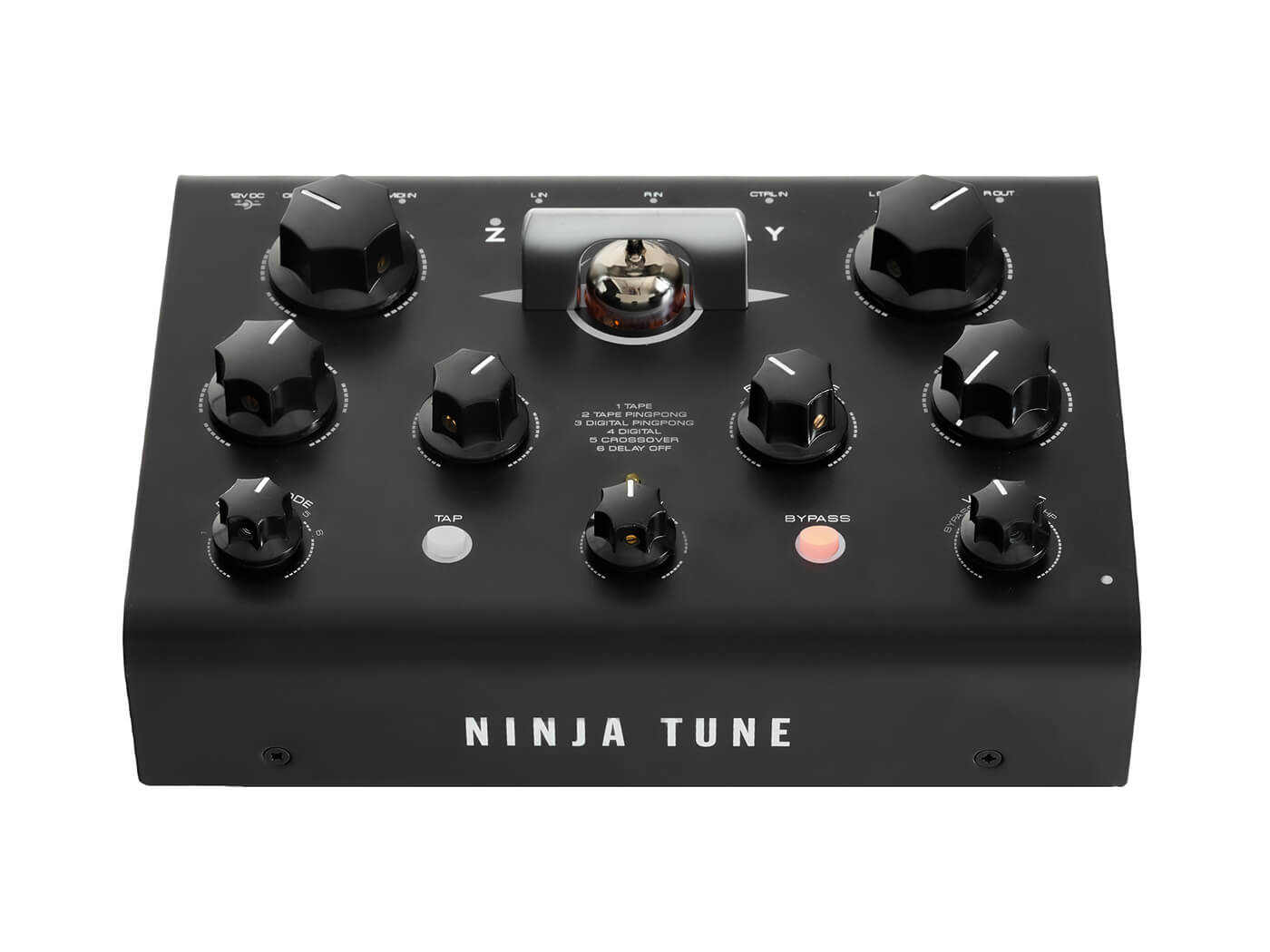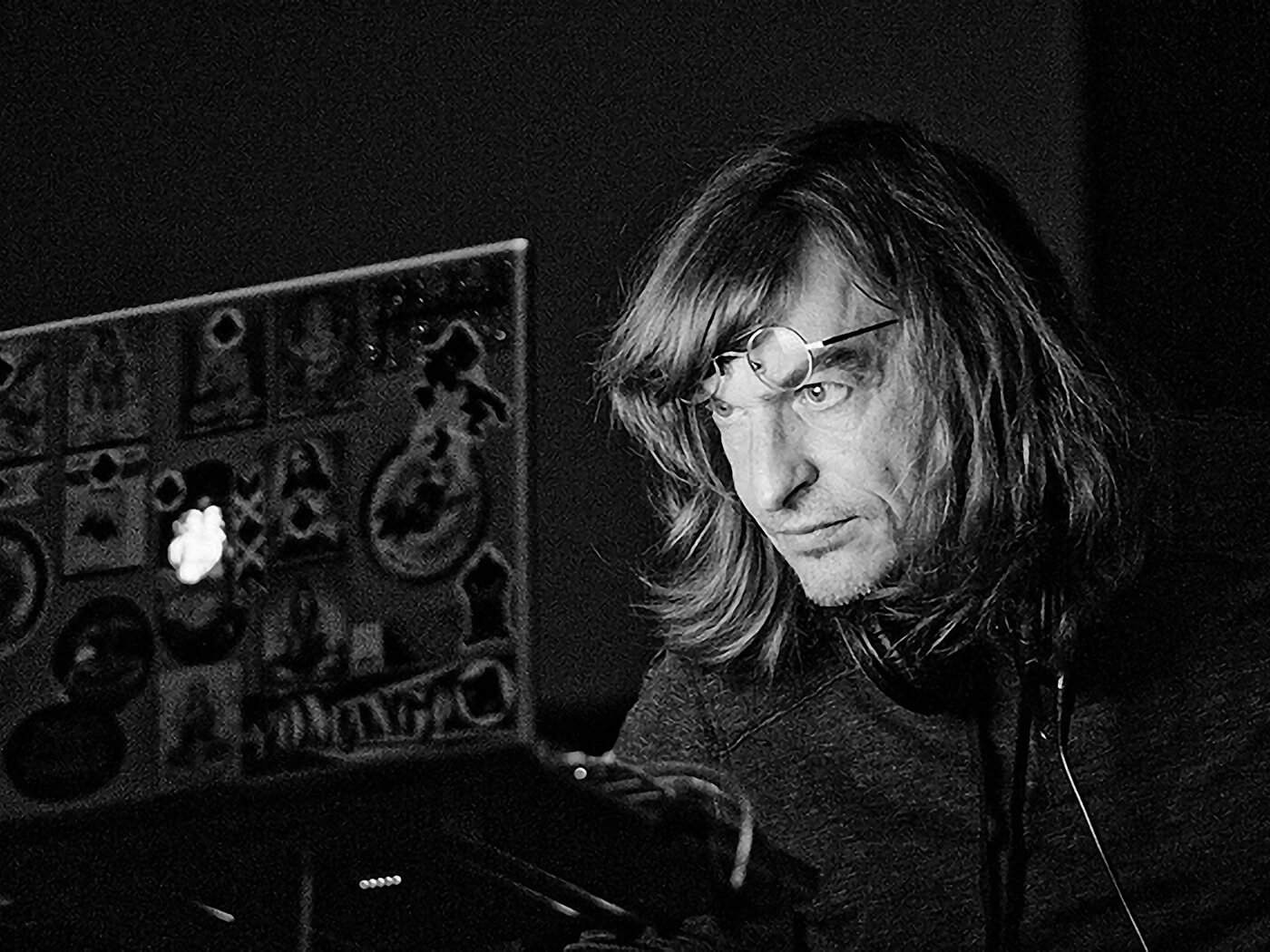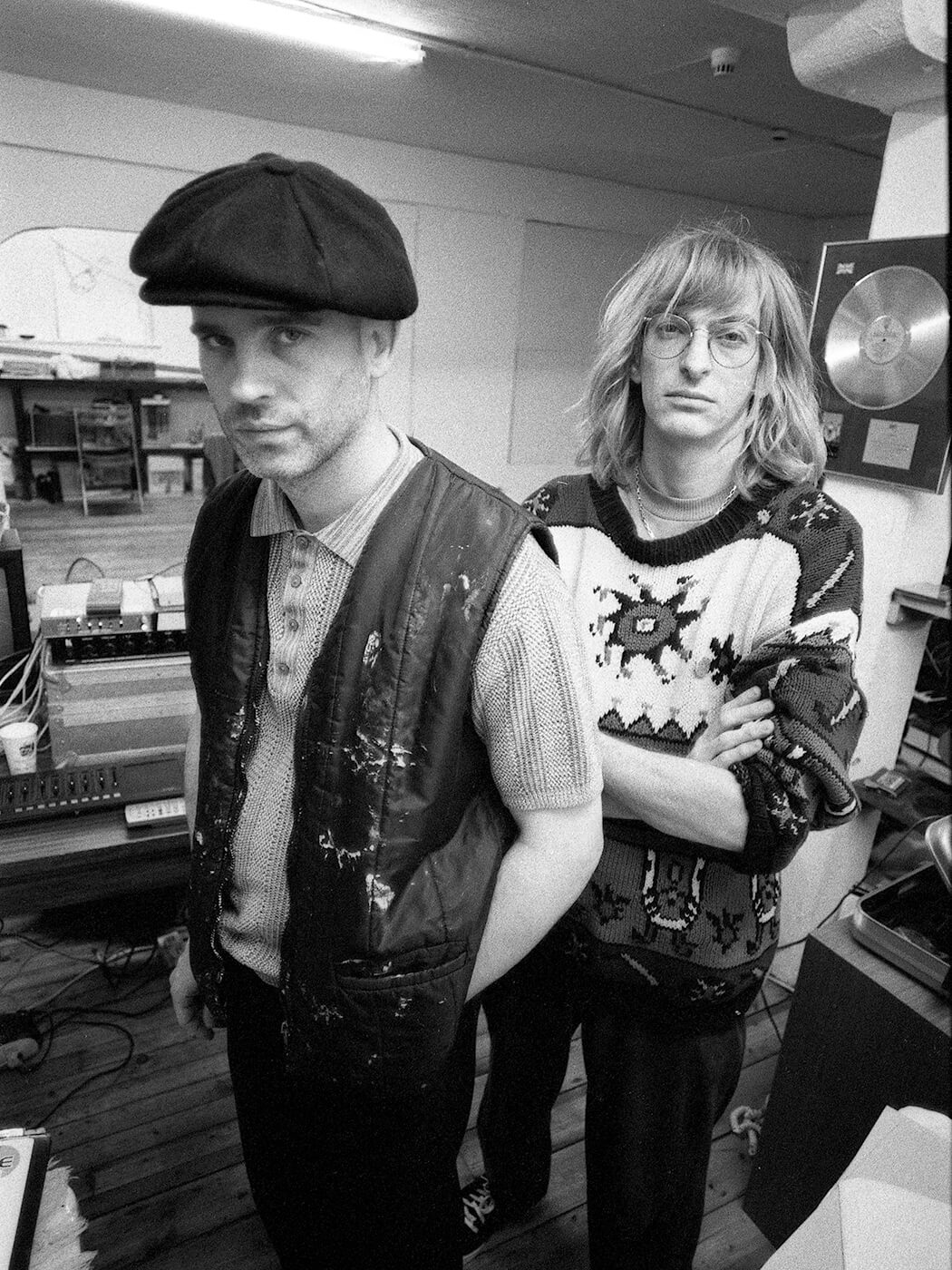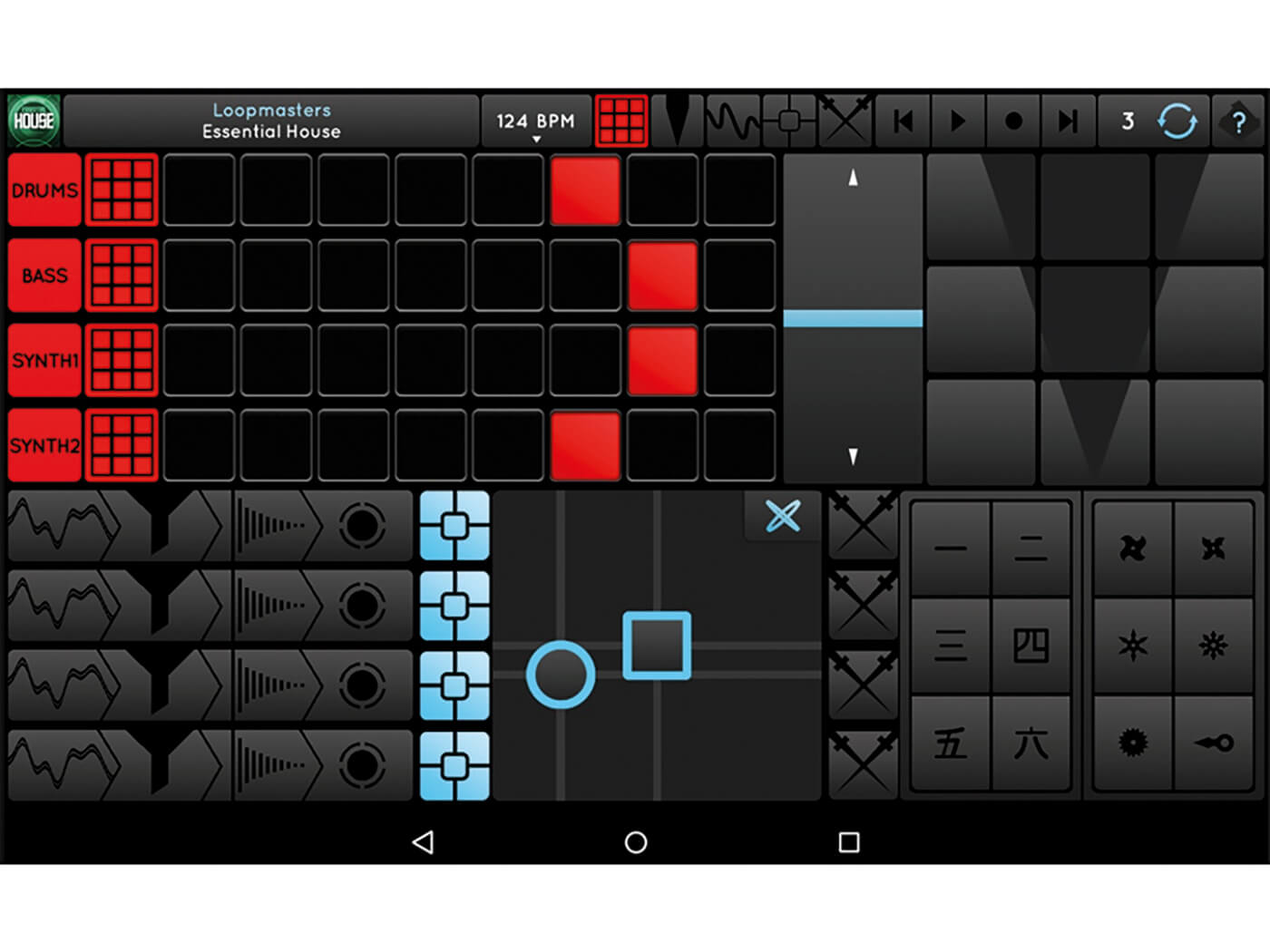Matt Black on the legacy of Coldcut, the values of Ninja Tune and building innovative new technology
Part of the iconic duo Coldcut and a founder of one of the industry’s most prominent labels, Ninja Tune, Matt Black speaks to us about his illustrious career, as well as some brand-new inventions that he co-created.

Image: Oz Owen
There are few figures in the industry that have had the same level of impact as Matt Black, from a production and performance point of view, his work with Jonathan More as part of Coldcut alone would be enough to enshrine his legacy as a pivotal figure in the evolution of dance music. Arguably the first ‘stars’ of dance, Coldcut’s unique approach to integrating sampling, DJing and a range of mixing techniques across their records, and their productions with Yazz and Lisa Stansfield, elevated the consciousness of the record-buying public to their special sonic chemistry.
But, dissatisfied with the climate of the cutthroat recording industry, Black and More set up Ninja Tune, a record label designed to give the power back to the artists and give them the creative space to make interesting records that wouldn’t see the light of day in the conventional industry. Ninja Tune exploded and is now regarded as one of the most beloved independent labels in the electronic music world.
But Black has also been pushing forward in other areas too. A lifelong tinkerer and computing enthusiast, some of the products he’s been involved with include the ahead-of-their-time DJamm and VJamm software that in tandem served to merge the computing world and the live music worlds in the late 90s. Now Matt has had a hand in a new dub delay unit in collaboration with Erica Synths. The Zen Delay is a three-way collaboration and is a multi-purpose effects unit that takes its cues from the modular world. Time to find out more.
So Matt, let’s start by talking about the new Zen Delay, where did the idea for this product come from?
It stemmed from a visit to Superbooth in Berlin about three years ago. I was there with my friend Ingmar Kock (aka Dr Walker) who used to be in innovative German outfit Air Liquide. We were hanging out with him in East Berlin and we decided to go to the Superbooth show. I was really blown away by it, and how this whole new scene had mushroomed up out of nowhere.
It reminded me of how I built an analogue synth back in 1976 and how I used to love getting hands-on with electronics and building, but I hadn’t really done that for a while. I remember seeing The Human League on the cover of NME and buying loads of those early synth-pop records which triggered my interest in starting a band with my friends when I was younger. So yes, it was amazing that, unbeknown to me, this whole synth-building, modular scene had taken off again. I was impressed by how the show was focused on modular but also embraced the boutique audio world in general, and the bigger scene that surrounded it. People were building some pretty crazy boxes, which really interested me.

So you felt a kinship with the ideas of the manufacturers and artists at Superbooth, why specifically did you decide to work with Erica Synths on this unit?
In a way. I suppose this new scene came off the back of the old analogue synth collecting fetish that I was definitely a part of through the 90s and 00s. I sold my big Korg polysynths to Aphex Twin a few years ago, but I’ve still got a few nice boxes, including a mythical 1969 EMS VCS4 (a synth that was prototyped but never actually went into production). So yes, I was pretty blown away by the range of stuff I was seeing at Superbooth. We had the guys from Bastl Instruments that were crashing at Ingmar’s place so we naturally started jamming together.
That then led to Ingmar and I talking about getting involved with making some hardware. Ingmar asked if Ninja Tune would be interested, and I thought it could be a great new direction for the label to experiment with. So we decided on an effects unit, rather than a synth module. We wanted to make something that could be of interest to a wider audience beyond the modular world – perhaps not everyone that’s on Ninja Tune has a modular or would be into that, but pretty much everyone experiments with sound and so they can utilise this unit and freak it out!
It was Ingmar who decided we should partner with Erica Synths, and thought they’d be a good match for Ninja Tune. They make boutique stuff but it’s high quality and has a distinctive look. The result of our collaboration is the Zen Delay.
Is there an echo in here?
How much of the design was your idea and how much did Erica bring to the table in terms of aesthetics?
It really was a three-way collaboration between Erica Synths, Ingmar and myself. It does resemble other Erica bits of gear, I think the Fusionbox is an obvious comparison. But inside there have been quite a few innovations, and Ingmar and myself were able to have a lot of input into tweaking the product. For instance, the overdrive took a long time to get right – after a couple of prototypes I still wasn’t happy with it. I went back to the engineers and they ramped it up to the point where we’ve got a really good sweet spot with it now. Another thing we got in was a VCA so that as the distortion comes in, the vol is backed off… distortions that suddenly make the sound 10 times louder annoy me! There were other things that took a while to fine tune, like MIDI Sync and delay time.
It was actually Ingmar’s idea that we could add a firmware update ability so that we can keep adding different programs to the unit. That’s not something we’ve initially publicised, but it’s possible to keep updating the firmware. Hopefully we’ll come out with some other really creative and cool presets for it.
In fact, the famed duo Basic Channel got in touch to say that they thought Zen Delay was great but requested we add some more triplet delay times, we thought that was a good suggestion and said we’d make that available via a firmware update. You’ll be able to download these presets from Erica Synths website in due course.
It’s a great mashup between Erica Synths’s high quality design and Ingmar and myself’s input.
But why a delay specifically?
We love dub delay! Our PR team asked us the other day actually – ‘just what is it that makes this unit special?’ That got me thinking and I had a good look around at our competitors. To be honest there’s no other stereo tube delays out there. There’s other tube delays of course, but they’re mainly mono. Zen Delay is proper stereo – stereo in and stereo out. I think that sets it apart. Especially for DJs, having real stereo is very important.
It also just sounds really good, with a lot of things you have to turn the feedback right up to get that deep sound, but with the Zen there’s a lot of manoeuvre to get that infinite loopback effect.
We’ve described it as a dub delay. I think it’s interesting to draw the lines with dub aesthetic and technique. Obviously it’s about echo and feedback and I’ve always loved that in dub records, the way that slapback is used to create rhythm across the beat, and that really adds a lot of rhythmic interest. Another popular technique would be to sweep the EQ to get a sort of wah-wah effect. With a nice big fat Erica-style filter there’s a lot of scope for doing that. Those two functions give it a lot of ‘dub’ power.
Back to black
Turning to yourself Matt, right back to the beginning of your journey, how did your interest in technology and music-making begin?
Well, it all really started when I was seven or eight years old. I had an interest in science fiction – it was the sixties and the space race was massive in popular culture. I had a little toy that I called ‘Spacedog’, I had all these cool spacey toys, like robots and that sort of thing. I loved some of the sounds they made. I started wiring up bulbs and electric motors and would charge my family to come in and see what I’d created. My mum called it a ‘sound and light show’. I think my mum calling it that actually had a big effect. I’m essentially still doing the same thing fifty years later!
So anyway, my fiddling with wires and circuitry led me to start experimenting with radio, learning how to make interference, and then I remember wiring up some bulbs to the output of this little stereo I had. I noticed that I could get the bulbs to flash in time to the rhythm of the music.
When I got to school I started running a little radio station on the school intercom at lunchtime and then a disco with my mates.
Shortly after that I started work on building a synth with a friend of mine, I didn’t really know how to solder and it was all a bit trial and error – I remember soldering the transistors in upside down!

We’d got the schematics from this Practical Electronics magazine, but my friend Aidan Sutcliffe started modifying the design. The existing design didn’t really have a patch bay but he figured out that he could make one by buying all these switches and making a matrix of switches so you could pretty much connect it to anything else; i.e. turn it into a modular. I saw him doing this and it really inspired me to expand the scope of designs. That was the first time I realised that you could take a design that was given to you and then change it in your own way. That attitude was really useful to me in my career.
Flash-forward to university, I had a band called The Jazz Insects and that got me further into synths and music. My mates and I started getting into hip-hop and learned how to scratch-mix. I got a Yamaha cassette deck, four-track. It was a standalone unit and great to mess around with. That’s really when I started making records.
I remember being really excited by all the raw house records coming out of Chicago, and being really aware that the artists were just using a drum machine and a synth – I realised I could do that, too.
In those days it must have been considerably harder to learn about music technology, production techniques and how to make certain genres than now, with YouTube and publications like ours…
Well yes, there were certainly no ‘how to scratch’ videos on YouTube. We pieced it together from watching television performances, taping them and re-watching them again and again to try and figure out what was going on. There was no internet, and no way to get immediate access to the tutorial information you needed. But I had my little posse of mates and we were all learning together so it was a lot of fun.
Of course you’d later meet Jonathan More and begin Coldcut. How did that manifest and what technology did you make a staple of your sound initially?
Coldcut came about through DJing. Through a love of music and wanting to do something with records. A disc jockey plays records while a DJ plays with records. It turned out that Jon and I were both obsessed with these records coming out of New York, particularly the work of Double Dee and Steinski. I first met Jon via a friend who had both our mixtapes, so we were aware of each other. After we met up we decided we should try and do something. Our first single Say Kids What Time Is It? was made using turntables, a mixer and a four-track cassette. The backing track was edited on a stereo cassette tape.
There was a technique me and my friends developed at college, where we didn’t have a reel-to-reel, but you could always use the pause button on a cassette deck to make edits. It was pretty primitive but it was an instant technique we used. It was all about turntables in those days. Vinyl manipulation with scratching and mixing.

I’m sitting here now in front of my laptop, loaded with an uncountable number of effects and synths and samples, which in hardware would cost about a million quid! But I can put my laptop in my backpack now and just go anywhere with it. It really is incredible, but sometimes I feel like I’m sort of drowning in the possibility. I can’t decide what to do next because I can do anything. In the old days, everything was more limited but that was quite focusing. Sometimes I think that too much computer-based music making can turn you into a librarian when in reality, you should be creating, in the moment.
Inventing the future
Another strand to your career is the innovations in technology you’ve been involved with – VJamm and DJamm for example. They’re good early examples of the merging between computer-based and traditional hardware worlds. Was that a conscious objective, or were you just trying to speed up your own workflow?
So the three main passions I’ve had since my mid-teens are DJing, synth-building and computing. I read The Selfish Gene by Richard Dawkins and The Shockwave Rider by John Brunner, which was one of the first cyberpunk novels. They both blew my mind and since then I hooked on to the idea that computing was cool. I never saw computers as simply boring machines that companies used to do their accounts, I saw them more as a gateway to a new subculture of hacking, being rebellious and more creative. I started learning to program, partly inspired by reading how you could create programs that simulated evolution in The Selfish Gene.

In 1984 I got a job as a computer programmer at Logica, and it was while working at this company that I saw an early computer graphics system, and learned about data compression and storage, and my fascination with that led me to working in the comms department. This was a really major step in learning how important computing was going to be, and the creative potential of them.
VJamm and DJamm I regard as part of my artwork really. Meta Art is art that can be used to create more art, and that was what I was trying to do. I also thought that messing around with sound and vision is so much fun that it should be available to everyone. It was a rave new world! I was once described as ‘the Bill Gates of VJ’ing’. Oddly enough, DJamm and VJamm didn’t sell all that well, yet people still talk to me about them all the time and say they’ve been influenced by them.
The new version of our Jamm software is coming soon – it’s called Jamm Pro, it’s very directly related to DJamm, and is a full music-making app for iPad. We released a free, touch-control version called Ninja Jamm about five years ago, but what I found was that people wanted to load their own samples and make their own music. So we’ve evolved the software to do that, and we’re poised to release that soon. It’s really a monster program. I’ve got the instrument that I’ve always wanted now. Using Audiobus you can route other apps into it, too.

Also recently, I’ve had my very first financially successful software product, MidiVolve, which is a Max for Live patch that is an arpeggiator, riff generator and sequencer. I really loved working on this. It’s a great idea-generating tool.
Ninja Tune is an important part of the electronic music world, it’s grown significantly from what it was initially. Would you say the philosophy of Ninja Tune has changed at all?
I think Ninja Tune’s core values are the same, a few years back I sat down with my Ninja partners and came up with a mission statement for what Ninja Tune should always be, to keep us grounded in our values which are:
- Release interesting music
- Treat our artists fairly
- Be a good employer
- Improve our environmental practice.
Fundamentally it’s about musical freedom. This is something that Jon and I suffered the lack of when we got signed, we got quite bruised by that and it gave us the motivation to launch an artist-led label. We attracted a bunch of other artists too. I think we have maintained these values and have a good reputation as a result.
The music we’re putting out may have changed, but you can’t just do the same thing for thirty years. I don’t think there’s anything wrong with genre descriptions or labels as long as you can have more than one at the same time. I think we’re more eclectic than ever before, and I’m really happy about that.
What would you say you’re most proud of in your career?
Well, humanity is fast approaching environmental collapse right now, and that’s something that’s very much on my mind. So when I look back at tracks such as Stop This Crazy Thing, which had a message of ‘let’s wake up to what we’re doing to ourselves and the environment’, and songs such as People Hold On and Yazz’s The Only Way is Up (produced by Black and More) I like to think were were on track in presenting some sort of greater awareness and positive feeling to the listeners. For me those tracks were deeper than just making interesting noises, they had something to say. Also I think that the greater prominence of A/V in electronic music performance means that there’s a vindication for those of us who were trumpeting it back in the early days.
What advice would you give to those looking to have a career as diverse and creative as yours?
Concentrate on your love of music and sound and not necessarily on monetising that or you risk losing touch with your passion. It’s easier than ever to make music now, upload it and have it listened to all over the world. But will anyone notice? It’s more competitive than ever, so perhaps it’s harder to make a living out of it. I do believe Jimmy Cliff ‘You can get it if you really want it’, but true success is just doing what you love, some of the time! There’s no formula for fame, because if there was then everyone would follow it. At Ninja Tune, all the artists have their own character you can hear in their music, I think that’s really integral to being an artist with merit. As Thelonius Monk said, ‘Everyone is a genius at being themselves’.
For more MusicTech interviews, click here.